- Home
- Dean Koontz
The Night Window Page 3
The Night Window Read online
Page 3
“Arcadia. From ancient Greece. A place of peace, innocence, prosperity. Essentially Utopia.”
Hollister beams and claps his hands twice. “You are just the young man to understand my story.”
“But why ‘techno’?”
“Do you know what nanotechnology is, Tom?”
“Very tiny machines made up of a handful of atoms, or maybe molecules. They say it’s the future, with unlimited medical and industrial applications.”
“You are so cutting-edge,” Hollister declares and pushes a call button on the table leg. “When I saw your films, I said, ‘This is a guy on the cutting edge.’ I’m delighted to see I was right.”
In answer to the silent summons, Mai-Mai returns to freshen their wine and remove the empty plates that held the Parmesan crisps.
Thomas Buckle smiles at her and thanks her, but he seems to have intuited that the proper behavior in these circumstances is to treat her with reserve, not as if she were working at Olive Garden.
The entertainment business hasn’t coarsened him yet, for though Mai-Mai fascinates and attracts him, he watches her not with evident lust, but with an almost adolescent wistfulness and yearning.
When the two men are alone once more, Hollister says, “Let’s suppose these conspirators, these Techno Arcadians, have developed a nanomachine brain implant, a control mechanism, that makes complete puppets of the people in whom it’s installed. And the puppets don’t know what’s been done to them, don’t know they’re now…property.”
The director blinks, blinks, and a certain quiet excitement comes over him that has nothing to do with six hundred million dollars, that arises from his passion for filmmaking.
“So…central to the story would be the issue of free will. A conspiracy intent on subjugating all humanity, the death of freedom, a sort of technologically imposed slavery.”
Hollister grins like an amateur author thrilled that a real writer found merit in his scenario. “You like it so far?”
“I damn well do. I like it more by the minute. Even though Jane Hawk inspired the idea, we can’t say this is her story, so we’d have to change the character to maybe a CIA agent or something, make her a little older. Maybe it’s even a male lead. But one thing…why would anyone submit to having such a brain implant surgically installed?”
Leaning forward again, punctuating his revelation with a wink, Hollister speaks in a stage whisper. “No surgery required. You drug them or otherwise overpower them when they’re alone, and the implant is administered by injection.”
4
Jane Hawk hurried out of the storage room. Milky daylight spilled through a large sales area and curdled to gray in a hallway. Two doors stood open on each side of the hall, a shadowy bath and dark empty offices.
At the front of the store, two frosted-glass show windows each bore the words CLASSIC PORTRAIT PHOTOGRAPHY painted in script, reversed from Jane’s perspective. Between the windows stood a door with a frosted inlay, and as she approached it, a man shape loomed beyond like a stalker emerging out of fog in a disturbing dream.
He must be one of them. She’d have to take him down to get to the street and away, but even if he was a mortal threat, she could not risk resorting to gunfire when there were sure to be pedestrians on the sidewalk.
The tall man in the raincoat might already be entering the back of the place from the alleyway.
Jane’s attention swung toward an interior door to her right, four panels of solid wood, no glass. If it was only a closet, she was cornered.
Instead, beyond lay stairs ascending into gloom. In nearly blinding darkness, she used the handrail to guard against a fall until she arrived at a landing. Another flight led up to a second landing where pale light issued from an open door.
Perhaps the photographer who had once run a business out of the ground floor had lived above his studio.
Considering that the people closing in on her seemed to have herded her into this building, one of them might be waiting in the second-floor apartment.
Her heart labored but didn’t race, for she was in the grip of dread rather than full-blown fright. If these were Arcadians—and who else could they be?—they were not going to kill her here. They were going to corner her, Taser her, chloroform her, and convey her to a secure facility where she could scream herself hoarse without being heard by anyone sympathetic to her plight.
Ultimately they were going to inject her with the neural lace that would web her brain and enslave her. Then they would drain from her the names of everyone who had been of assistance to her in this crusade and would insist upon knowing the whereabouts of her five-year-old son, Travis. When she was their obedient puppet, they would eventually instruct her to kill herself.
But not just herself. She knew these elitist creeps. She knew the icy coldness of their minds, the blackness of their hearts, the pure contempt with which they viewed those who did not share their misanthropic view of humanity and did not endorse their narcissism. They would relish cruel vengeance for the trouble she had caused them, for their comrades who had tried to murder her and had been killed instead. They would instruct her to torture her own child and slaughter him; only when he was brutally ravaged and dead would they tell her to kill herself. In the thrall of the nanoweb, with its filaments wound through her brain, she would be unable to resist even the most horrific of their commands.
Compared to injection, a quick death would be a mercy.
She put her tote beside the open door. Drew the Heckler & Koch Compact .45 from the rig under her sport coat. She hated clearing doorways in such situations, but there was no time to hesitate.
Pistol in a two-hand grip, leading with head and gun, low and fast, she crossed the threshold, stepped to the right, back against the wall, eyes on the Heckler’s front sight as she swept the room left to right.
Three windows facing the street. No blinds or drapes. Morning light slanting in under scalloped fabric awnings. No furniture. No carpeting on the hardwood floor. Nothing moved except a few dust balls stirred by the slight draft she’d made on entering.
An archway connected this room to others toward the back of the building, where darkness reigned, and there was a door on the right, ajar.
She held her breath and heard only silence. Both training and intuition argued that if someone was in the apartment with her, he would have made a move by now.
The silence was broken when a sound rose from below, perhaps someone ascending the stairs.
She returned to the apartment entrance to retrieve her tote. Among other things, it contained $90,000, all of which—and more—she had taken from the stashes of wealthy Arcadians who had tried and failed to kill her. She couldn’t afford to lose it; she was fighting a quiet war, but a war nonetheless, and wars cost money.
The building was old, and the stairs creaked under the weight of whoever was climbing them.
She closed the door. The deadbolt was intact. She engaged it.
5
Mai-Mai serves a small chopped salad sprinkled with pine nuts and crumbles of feta cheese.
Tom Buckle smiles and thanks her and watches her lithe form as she exits through the butler’s pantry.
When the girl is gone, Wainwright Hollister says, “I need to explain how an injectable brain implant might be feasible, Tom. I don’t want you to think of this as a science-fiction movie. It’s a thoroughly contemporary thriller.”
“I know a little about nanotech, Wayne, just enough to accept the premise.”
“Good. Very good. Now suppose hundreds of thousands of these microscopic constructs can be suspended in ampules of fluid and stored at temperatures between—oh, let’s say—thirty-six and fifty degrees, where they remain in stasis. When injected, the warmth of the blood gradually activates them. They’re brain-tropic. The veins conduct them to the heart, then the carotid and vertebral arteries bring them
to the brain. Do you know what the blood-brain barrier is, Tom?”
Buckle evidently finds the salad highly agreeable and pauses to swallow a mouthful before saying, “I’ve heard of it, but I’m no whiz when it comes to medical matters.”
“Nor do you need to be. You’re an artist and a damn fine one. Ideas and emotions are the stuff of your work. So…the blood-brain barrier is a complex biological mechanism that allows vital substances in the blood to penetrate the walls of the brain’s numerous capillaries while keeping out harmful substances such as certain drugs. Let’s imagine these amazingly tiny nanoconstructs have been designed to pass through the blood-brain barrier, after which they assemble into a control mechanism in the brain.”
“Could they really self-assemble? I mean…many, many thousands of them?”
“An excellent question, Tom. We wouldn’t have a viable story if I didn’t have an answer!” Hollister pauses to enjoy his salad.
“It’s snowing.” Thomas Buckle points to the windows behind his host.
Hollister turns in his chair to watch the first snowflakes, the size of quarters and half dollars, spiraling out of the low clouds like some jackpot disgorged by a celestial slot machine.
Refocusing his attention on his guest, he says, “The forecast is for twelve inches. Temperature will drop to the low twenties by nightfall. No wind yet, but it’s coming. Winter lingers on these plains. Have you experienced a storm in territory such as this?”
“I’m a California boy. My experience of snow is entirely from TV and movies.”
Hollister nods. “If a man were on the run from a killer on a night like the one coming, his least concern might be his would-be assassin. The weather itself could be the deadlier foe.” Before Buckle might wonder at this odd statement, his host favors him with a beguiling smile. “I’ve got a story in mind for just such a movie. But before I bore you with a second scenario, let’s see if I can make my nano tale convincing to the end. You asked how these tiny constructs could be made to self-assemble in the brain. Have you heard the term ‘Brownian movement’?”
6
Jane was at the moment safe behind the locked door of the second-floor apartment, although not safe for long.
This was a two-story building, and like all the buildings on this block—whether two, three, or four stories—it had a flat roof with a low parapet. There would be an exit to the roof somewhere in these rooms, probably by way of a metal spiral staircase tucked into a service closet.
But she didn’t want to go up and out that way. If she got to the roof through a trapdoor or through a stairhead shed, she might discover that they had anticipated her and had stationed one of their own up there to greet her. Then she would have nowhere to go.
Even if no sonofabitch with an XREP Taser waited above, Jane didn’t fancy a wild flight across rooftops as in a James Bond flick. Although the buildings varied in height, they were contiguous, and she was likely to find service ladders bolted to walls to allow roof-maintenance men easy passage from one elevation to another. However, she’d already counted five agents in this operation, so there might be more. And if they had mounted a force of that size, they might also have a drone at their service.
She’d previously survived an encounter with two weaponized drones in a San Diego park, something similar to a DJI Inspire 1 Pro with a three-axis gimbaled camera. An eight- or ten-pound drone couldn’t be fitted with even a miniature belt feed loaded with .22-caliber rounds, because the recoil would destabilize the craft. But those in San Diego featured a low-recoil compressed-air weapon that fired needle-like quarrels perhaps containing a tranquilizer.
The people now closing in on her would not risk using such a drone on a busy suburban street in a commercial district, but they might keep one hovering above the roofs where, if she appeared, she could be at once dropped unconscious without much chance that anyone at street level would see the assault.
The prospect of a machine assailant gave her a deeper chill than did a thug with a Taser XREP 12-gauge, not necessarily for good reason, but because it seemed to herald a new world in which those people not enslaved by nanoweb neural lace would be policed and punished by robots incapable of empathy or mercy.
She went to the front windows of the apartment living room, which faced onto the street and offered her the best—the only—chance of escaping capture.
7
Sitting with his back to the windows, Hollister is so attuned to the moment, so looking forward to Tom Buckle’s sudden realization of his dire situation, so enthusiastic about the pending hunt, his senses so heightened that he can almost feel the huge snowflakes spiraling through the windless day behind his back, can almost hear those delicate wheels of crystal lace turning as they descend, can almost smell the blood that will form patterns in brilliant contrast across a canvas of snow.
“Brownian movement,” he explains, “is progress by random motion. It’s one of nature’s primary mechanisms, Tom. The easiest way to explain is with the example of ribosomes, those tiny mitten-shaped organelles that exist in enormous numbers in the cytoplasm of human cells. They manufacture proteins.”
When his host pauses for wine, Buckle appears to be dazzled when he says, “Man, you’ve really worked this story out in detail.”
Hollister can feel his blue eyes twinkling with merriment, and he knows his captivating smile has never served him better. “Only because I so very much want you to be part of this, to sign on for this adventure with me. Now, ribosomes. Each one has more than fifty different components. If you break down thousands of ribosomes into their individual components and thoroughly mix them in a suspending fluid, then they ricochet off the molecules of the suspending medium and keep knocking against one another until one by one the fifty-some parts come together like puzzle pieces and, amazingly, assemble into whole ribosomes again. That is Brownian movement. It works with Bertold Shenneck’s control mechanism because each of the components is designed to fit in only one place, so the puzzle can’t assemble incorrectly.”
“ ‘Shenneck’?” Buckle asks.
Hollister should not have mentioned Shenneck, who had in fact invented the nanoweb implant. Now he covers his slip of the tongue. “As I was working this out, I needed to name some characters. That’s just what I call the scientist who developed the nanoweb implant.”
“It’s a good name for the character, but…” The director frowns. “It sounds a little familiar. We should check it out, make sure there’s not a prominent Bertold Shenneck out there anywhere.”
Hollister dismisses the issue with a wave of one hand. “I’m not wedded to the name. Not at all. You’re better than I am at this.”
Having finished his salad, the director blots his mouth on his napkin. “So how long does it take this brain implant to assemble once it’s been injected?”
“Maybe eight or ten hours with the first-generation implant, but the device will be improved, so it might be brought down to, say, four hours. The subject has no memory of being restrained and injected. Once the control mechanism is in place, his mind can be accessed with a key phrase like ‘Play Manchurian with me.’ Once accessed, he’ll do anything he’s told to do—and think he’s acting of his own volition.”
The key phrase delights Buckle. “That great Cold War movie about brainwashing. The Manchurian Candidate. John Frankenheimer directed from a Richard Condon novel. Sinatra and Laurence Harvey. Angela Lansbury as Harvey’s power-mad mother. About 1962, I think.”
“Shenneck liked his little jokes. The scientist character. Whatever we’re going to call him.”
“My head is swimming, Wayne, but in a good way. I’m really getting into the whole concept. But exactly how does this tie to Jane Hawk, where we started?”
Responding to the call button, Mai-Mai enters to remove the salad plates.
Hollister says, “Just imagine, Tom, that these Techno Arcadians are
intent not only on repressing the unruly masses by injecting and controlling selected leaders in politics, religion, business, and the arts. They also want to prevent charismatic individuals with wrong ideas from influencing the culture.”
Tom smiles at Mai-Mai and then responds to his host. “What wrong ideas?”
“Any ideas in disagreement with Arcadian philosophy. Let’s say it’s been decided that controlling these charismatic types isn’t enough, that it’s necessary to remove their unique genomes from society, prevent them from propagating. So they receive a brain implant and are later directed to commit suicide.”
Tom Buckle nods. “Like Jane Hawk’s husband. But how would these people be chosen for elimination?”
“A computer model identifies them by their public statements, beliefs, accomplishments. Then they’re put on the Hamlet list.”
“ ‘Hamlet’? Why Hamlet?”
“The theory is that if someone had killed Hamlet in the first act, a lot more people would have been alive at the end.”
Frowning, Tom Buckle says, “For the movie, we’d probably have to call it something other than the Hamlet list. Anyway, how many people would be on this list?”
“Let’s imagine the computer model says that, in a country as large as ours, two hundred and ten thousand of the most charismatic potential leaders in each generation would have to be removed at the rate of eight thousand four hundred a year.”
“Mass murder. This is a very dark movie, Wayne.”
“To the Arcadians, it’s not murder. They think of it as culling from the herd any individuals with dangerous potential, a necessary step toward peace and stability.”
Mai-Mai returns with the entrée: sea bass, asparagus, and miniature buttered raviolis stuffed with mascarpone and red peppers.

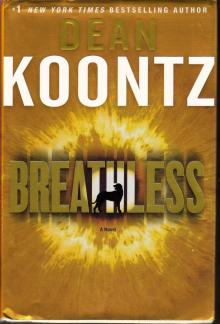 Breathless
Breathless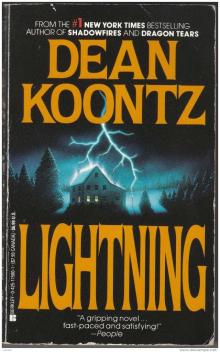 Lightning
Lightning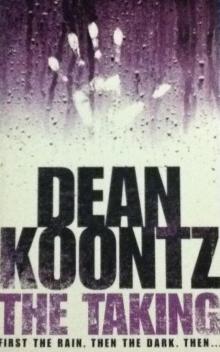 The Taking
The Taking The Door to December
The Door to December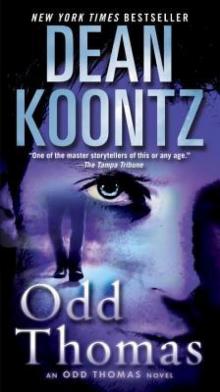 Odd Thomas
Odd Thomas Midnight
Midnight Whispers
Whispers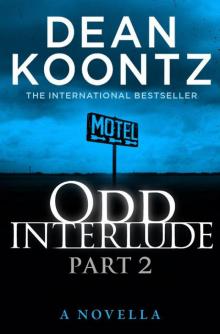 Odd Interlude #2
Odd Interlude #2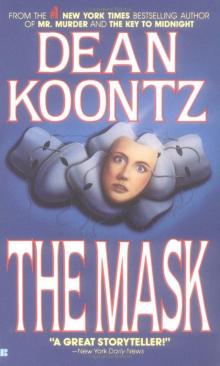 The Mask
The Mask Watchers
Watchers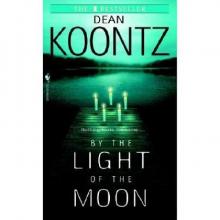 By the Light of the Moon
By the Light of the Moon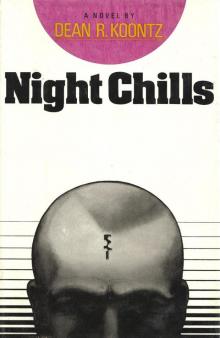 Night Chills
Night Chills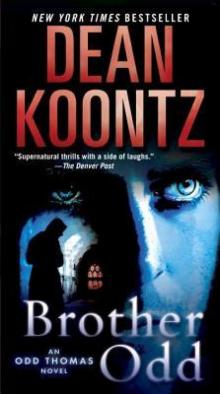 Brother Odd
Brother Odd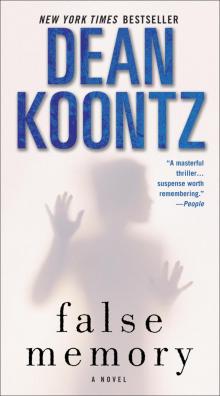 False Memory
False Memory The Darkest Evening of the Year
The Darkest Evening of the Year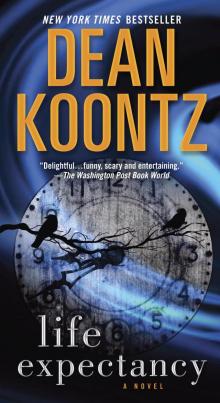 Life Expectancy
Life Expectancy The Good Guy
The Good Guy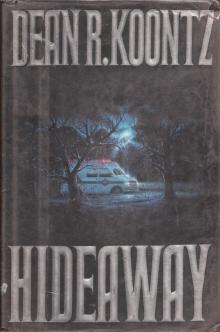 Hideaway
Hideaway Innocence
Innocence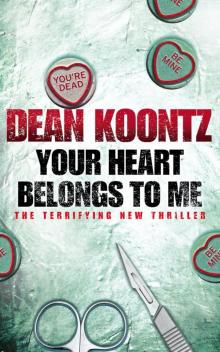 Your Heart Belongs to Me
Your Heart Belongs to Me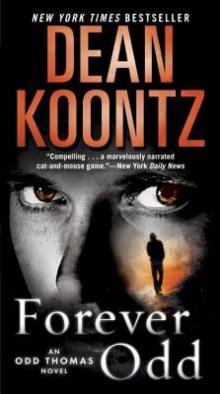 Forever Odd
Forever Odd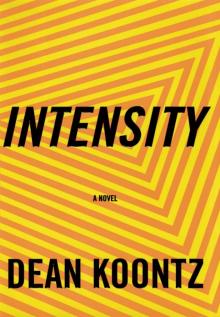 Intensity
Intensity Saint Odd
Saint Odd Dragon Tears
Dragon Tears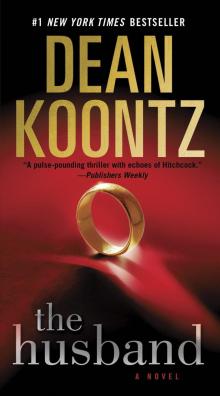 The Husband
The Husband Final Hour
Final Hour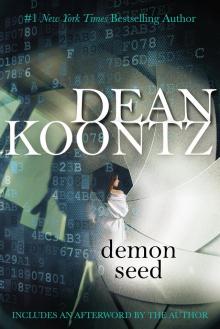 Demon Seed
Demon Seed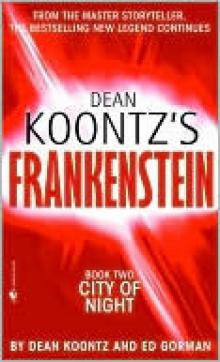 City of Night
City of Night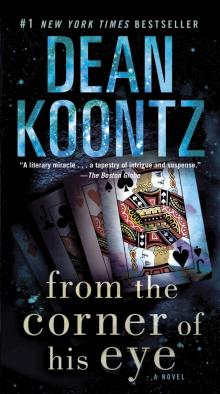 From the Corner of His Eye
From the Corner of His Eye A Big Little Life: A Memoir of a Joyful Dog
A Big Little Life: A Memoir of a Joyful Dog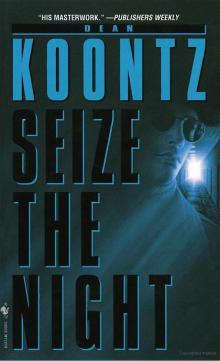 Seize the Night
Seize the Night Winter Moon
Winter Moon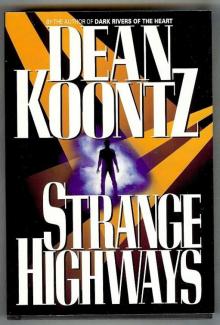 Strange Highways
Strange Highways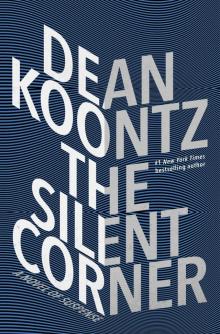 The Silent Corner
The Silent Corner Twilight Eyes
Twilight Eyes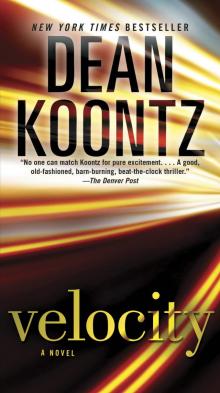 Velocity
Velocity The Bad Place
The Bad Place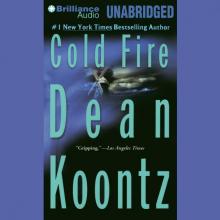 Cold Fire
Cold Fire The Whispering Room
The Whispering Room Ricochet Joe
Ricochet Joe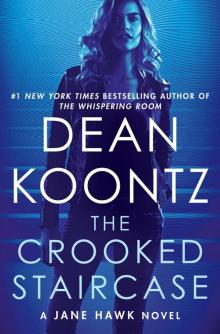 The Crooked Staircase
The Crooked Staircase Tick Tock
Tick Tock The Face
The Face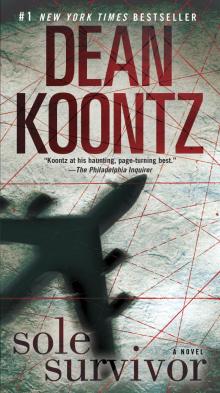 Sole Survivor
Sole Survivor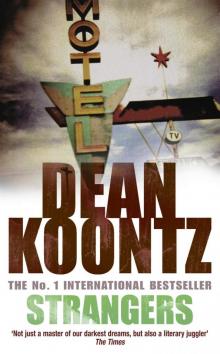 Strangers
Strangers Deeply Odd
Deeply Odd Odd Interlude #3
Odd Interlude #3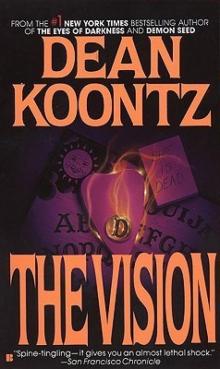 The Vision
The Vision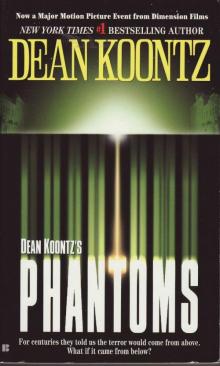 Phantoms
Phantoms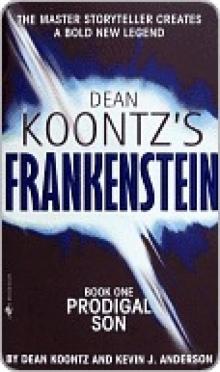 Prodigal Son
Prodigal Son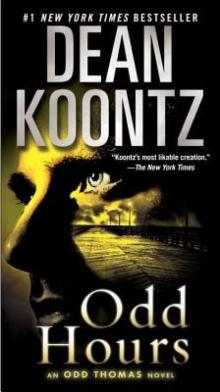 Odd Hours
Odd Hours Last Light
Last Light Fear Nothing
Fear Nothing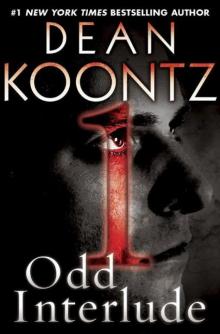 Odd Interlude #1
Odd Interlude #1 One Door Away From Heaven
One Door Away From Heaven Koontz, Dean R. - Mr. Murder
Koontz, Dean R. - Mr. Murder The City
The City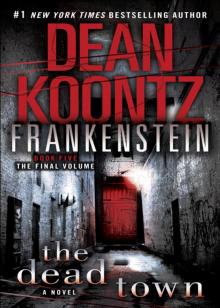 The Dead Town
The Dead Town The Voice of the Night
The Voice of the Night Dark Rivers of the Heart
Dark Rivers of the Heart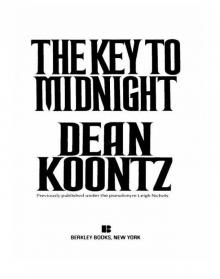 The Key to Midnight
The Key to Midnight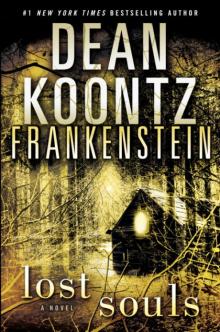 Lost Souls
Lost Souls Odd Thomas: You Are Destined To Be Together Forever
Odd Thomas: You Are Destined To Be Together Forever Odd Apocalypse
Odd Apocalypse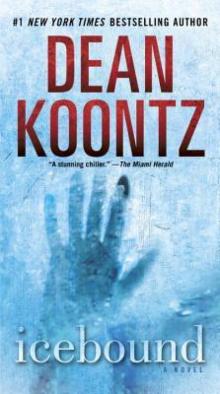 Icebound
Icebound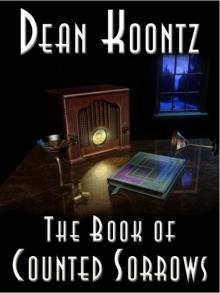 The Book of Counted Sorrows
The Book of Counted Sorrows The Neighbor
The Neighbor Ashley Bell
Ashley Bell Santa's Twin
Santa's Twin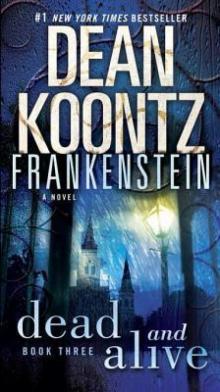 Dead and Alive
Dead and Alive The Eyes of Darkness
The Eyes of Darkness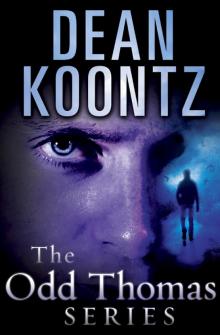 The Odd Thomas Series 4-Book Bundle
The Odd Thomas Series 4-Book Bundle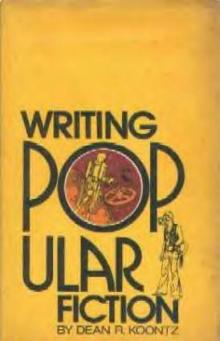 Writing Popular Fiction
Writing Popular Fiction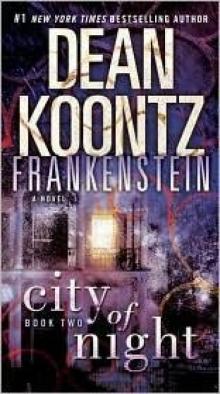 City of Night f-2
City of Night f-2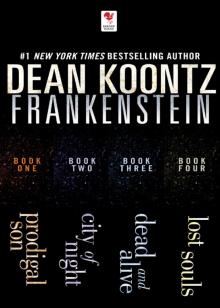 Dean Koontz's Frankenstein 4-Book Bundle
Dean Koontz's Frankenstein 4-Book Bundle What the Night Knows: A Novel
What the Night Knows: A Novel Demon Child
Demon Child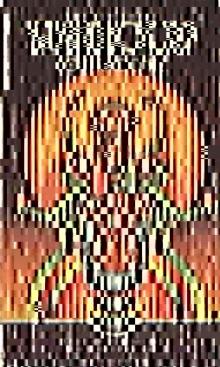 Starblood
Starblood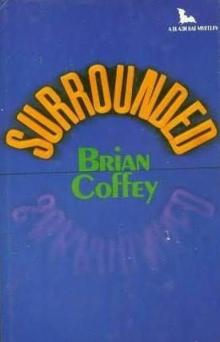 Surrounded mt-2
Surrounded mt-2 Odd Interlude #3 (An Odd Thomas Story)
Odd Interlude #3 (An Odd Thomas Story) Odd Interlude
Odd Interlude The Odd Thomas Series 7-Book Bundle
The Odd Thomas Series 7-Book Bundle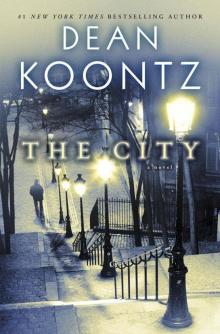 The City: A Novel
The City: A Novel Deeply Odd ot-7
Deeply Odd ot-7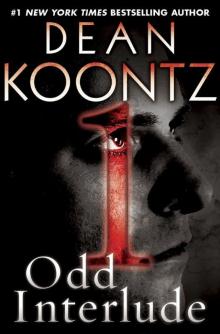 Odd Interlude #1 (An Odd Thomas Story)
Odd Interlude #1 (An Odd Thomas Story) The House of Thunder
The House of Thunder Odd Interlude ot-5
Odd Interlude ot-5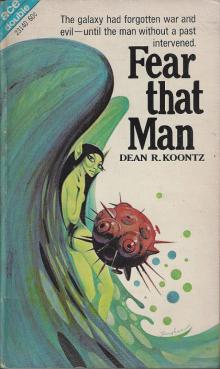 Fear That Man
Fear That Man Odd Is on Our Side
Odd Is on Our Side Relentless
Relentless A Big Little Life
A Big Little Life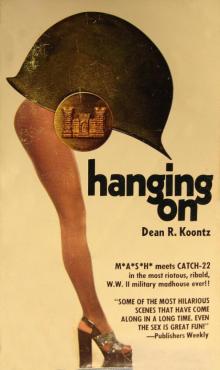 Hanging On
Hanging On The Forbidden Door
The Forbidden Door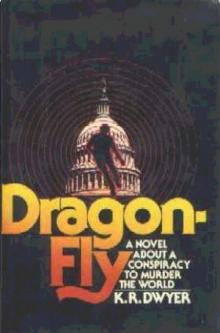 Dragonfly
Dragonfly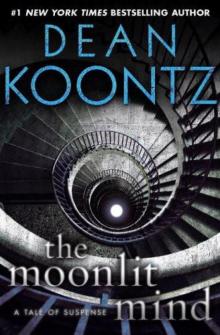 The Moonlit Mind: A Tale of Suspense
The Moonlit Mind: A Tale of Suspense Final Hour (Novella)
Final Hour (Novella) The Odd Thomas Series 4-Book Bundle: Odd Thomas, Forever Odd, Brother Odd, Odd Hours
The Odd Thomas Series 4-Book Bundle: Odd Thomas, Forever Odd, Brother Odd, Odd Hours Odd Interlude (Complete)
Odd Interlude (Complete) The Funhouse
The Funhouse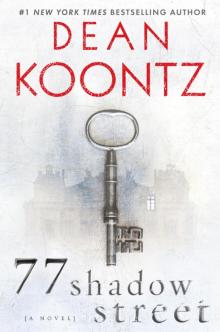 77 Shadow Street
77 Shadow Street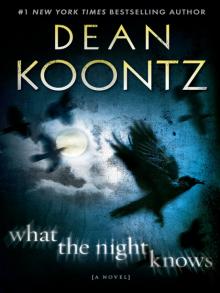 What the Night Knows
What the Night Knows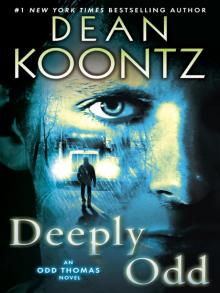 Deeply Odd: An Odd Thomas Novel
Deeply Odd: An Odd Thomas Novel The Servants of Twilight
The Servants of Twilight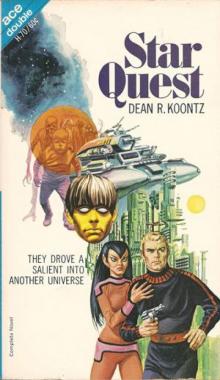 Star quest
Star quest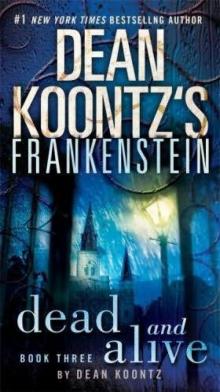 Frankenstein Dead and Alive: A Novel
Frankenstein Dead and Alive: A Novel Chase
Chase Eyes of Darkness
Eyes of Darkness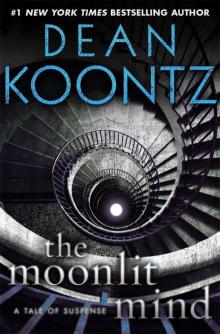 The Moonlit Mind: A Tale of Suspense (Kindle Single)
The Moonlit Mind: A Tale of Suspense (Kindle Single) Sussurri
Sussurri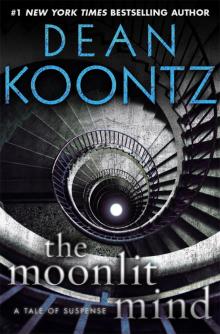 The Moonlit Mind (Novella)
The Moonlit Mind (Novella)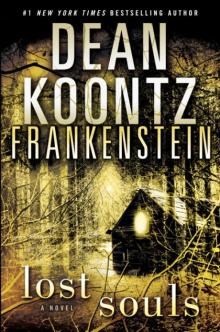 Frankenstein: Lost Souls - A Novel
Frankenstein: Lost Souls - A Novel![Ricochet Joe [Kindle in Motion] (Kindle Single) Read online](http://i1.bookreadfree.com/i2/04/05/ricochet_joe_kindle_in_motion_kindle_single_preview.jpg) Ricochet Joe [Kindle in Motion] (Kindle Single)
Ricochet Joe [Kindle in Motion] (Kindle Single) Innocence: A Novel
Innocence: A Novel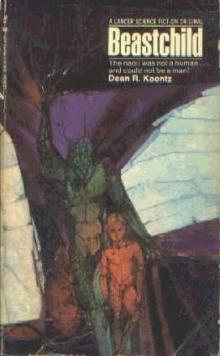 Beastchild
Beastchild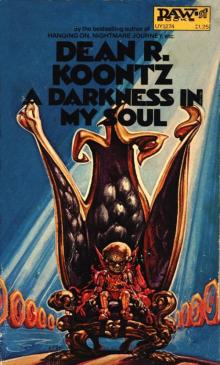 A Darkness in My Soul
A Darkness in My Soul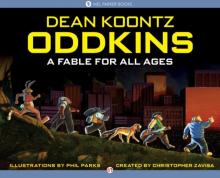 Oddkins: A Fable for All Ages
Oddkins: A Fable for All Ages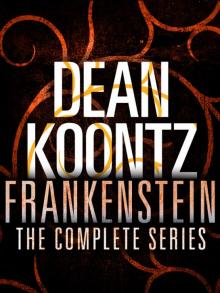 The Frankenstein Series 5-Book Bundle
The Frankenstein Series 5-Book Bundle Frankenstein - City of Night
Frankenstein - City of Night Shadowfires
Shadowfires Last Light (Novella)
Last Light (Novella) Frankenstein - Prodigal Son
Frankenstein - Prodigal Son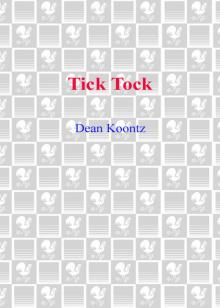 Ticktock
Ticktock Dance with the Devil
Dance with the Devil You Are Destined to Be Together Forever (Short Story)
You Are Destined to Be Together Forever (Short Story) The Moonlit Mind (Novella): A Tale of Suspense
The Moonlit Mind (Novella): A Tale of Suspense Darkness Under the Sun
Darkness Under the Sun Dark Of The Woods
Dark Of The Woods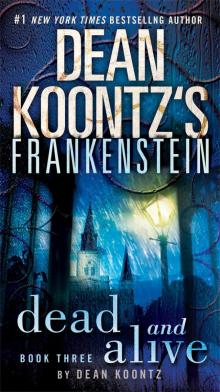 Dean Koontz's Frankenstein
Dean Koontz's Frankenstein Frankenstein
Frankenstein The Face of Fear
The Face of Fear Children of the Storm
Children of the Storm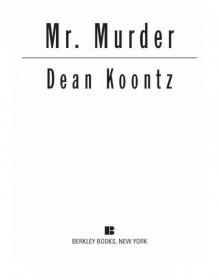 Mr. Murder
Mr. Murder